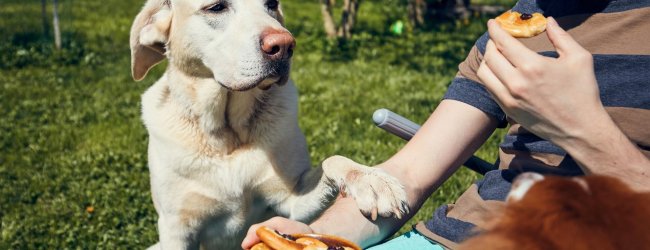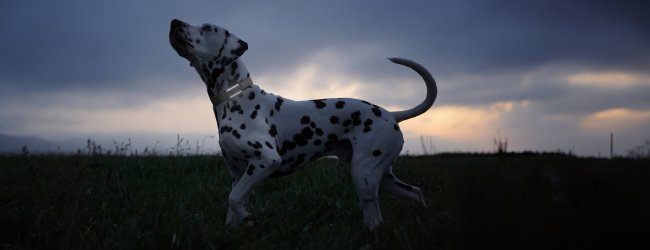What Is Toxic To Dogs? Watch Out For These Common Items
You want to keep your dog safe. But chances are, there could be substances that are toxic to dogs within your buddy's reach. Learn how to protect your dog from the most common canine poisons in this post.
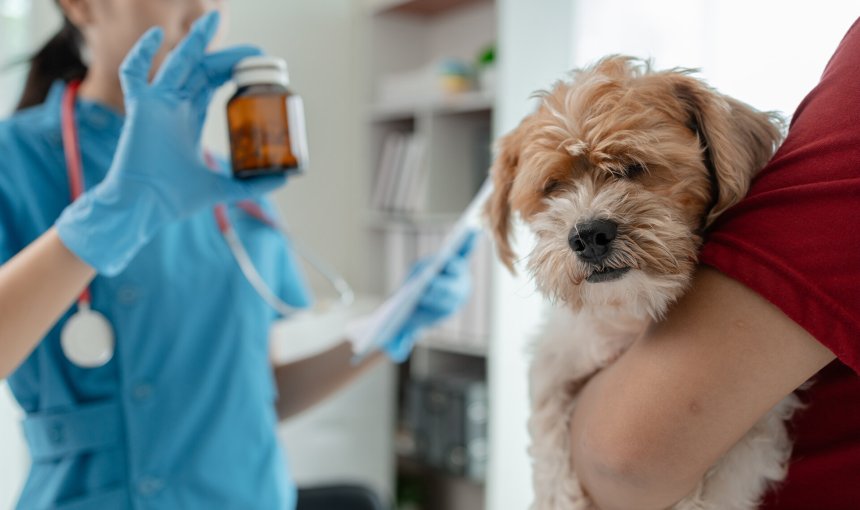
In the US alone, every year has around 401,500 cases of pet poisoning, according to the WebMD Pet Health Center.1 Besides the usual suspects like chocolate, a whole bunch of common household items – including weed killer, antifreeze, and even your indoor plants – can end up on the list of what is toxic to dogs. So in this post, we’re going to cover some of the household items – besides food – that can be harmful to your buddy. Plus, what you can do to poison-proof your home and also keep your dog safe from poisoning when they’re venturing outdoors.
Key Takeaways
Watch out for everyday human foods like chocolate, grapes, and even the artificial sweetener xylitol.
Keep household items like human medications and pesticides locked away. Even common plants like azaleas and tulips can be a danger to your furry friend if they get ahold of them.
Head to your vet if you notice symptoms like vomiting, trouble breathing, or dehydration. Don’t panic, but act quickly.
A Tractive smart dog tracker monitors your dog’s heart rate and breathing rate – and helps you spot a change quickly. (Often a sign of discomfort or pain, which could signal poisoning.)

Always know your buddy is healthy & safe
Read moreWhat is toxic to dogs? Food, medications & more
According to the Pet Poison Helpline, here are some of the most common household items that led to an increase in pet poisoning between 2020-20211:
- Yeast
- Brewed coffee
- Bread dough
- Art supplies
- Marijuana
- Paint
- Cleaning supplies
- Cocktails
- Vitamin D3
- Wine
Besides these, watch out for:
“Human” foods
- Chocolate
Though not harmful to people, chocolate contains theobromines that can cause vomiting in small doses, and death if ingested in larger quantities. Always keep all chocolate out of the reach of your dog, including chocolate decorations for Easter, Christmas or other holidays. - Alcohol
Symptoms of alcohol poisoning in animals are similar to those in people, including vomiting, breathing problems and, in severe cases, death. - Avocado
You might think of them as healthy, but avocados have a substance called persin that can act as a dog poison, causing vomiting and diarrhea. - Grapes and raisins
Grapes, raisins, currants and sultanas are all toxic to dogs and it is believed the dried forms of these fruits are more toxic. As well as causing stomach problems, these fruits can cause kidney failure. Even just a small amount may cause problems in some dogs. - Xylitol
This sweetener is found in many products, including sugar-free gum and candy. Xylitol can cause a dog’s blood sugar level to quickly drop to dangerous levels and larger amounts can also cause liver failure.
Read more: What Can Dogs Not Eat? 15 Foods Poisonous To Dogs
Medications
Everything in your bathroom cabinet could likely come in handy for you in a pinch – and send your dog to the emergency vet ward, all in one. Over the counter and prescription meds are among the most common toxic items pets can end up getting their paws on. Meaning, nearly any kind of medication or supplements can count as toxic to dogs. (Including common medications like aspirin, paracetamol, and ibuprofen.)
Other drugs that should not be near your dog as they can be dangerous, even in small doses, include:
- Antidepressants, which can cause extreme vomiting.
- ADHD medications, which can cause changes in heart rate, blood pressure and body temperature.
- Anti-diabetics, which can cause a major drop in blood sugar levels causing disorientation, lack of coordination and seizures.
- Anti-inflammatory medication, like Advil, Aleve, and Motrin
- Cold medicines, which can act as a stimulant causing elevated heart rates, blood pressure, body temperature and seizures.
- Common painkillers, like Tylenol
- Heart medications
- Vitamin D derivatives, which can cause kidney failure.
- Muscle relaxants, which can impair the central nervous system and lead to death.
⚠️ Make sure you keep anything even resembling a tablet out of reach of your dog. (Including medication prescribed for them!) Keep them in locked cabinets or high cupboards where they can’t reach or access easily.
Both indoor & outdoor plants
You might not think of plants when it comes to considering what is toxic to dogs – but turns out, a whole bunch of both indoor and outdoor plants commonly found in gardens could make your dog ill. Some of these are highly poisonous, while others may only cause a bit stomach problems. (But why take the risk and find out the hard way?)
Here are a couple of the most poisonous plants to dogs – so you can get to setting up a dog-friendly backyard in no time:
- Azaleas and rhododendrons. These pretty flowering plants may cause vomiting, diarrhea, coma and, worst case scenario, death.
- Tulips and daffodils. The bulbs of these plants may cause serious stomach problems and and increased heart rate. In more serious cases, changes in heart rate, body temperature and blood pressure can occur.
- Sago palms. Eating just a few seeds may be enough to cause vomiting, seizures, and liver failure.
⚠️ It’s not just your backyard – any plants you might run into outdoors while out on a hike, walk, or run in the woods could be toxic to dogs.
Pesticides
You may think you’re doing your dog a favor when you apply pesticides produced to fight fleas and ticks, but thousands of animals are unintentionally poisoned by these products every year. (Especially if your dog gets a bite, lick, or taste of it entirely by accident.)
Including substances like:
- Weed killer
- Slug and snail bait
- Insecticides
- …and more
The types and toxicity of chemicals used to kill insects, fungus or other unwanted living things vary dramatically – but in each case, there’s always the risk it might end up fatally toxic to your dog.
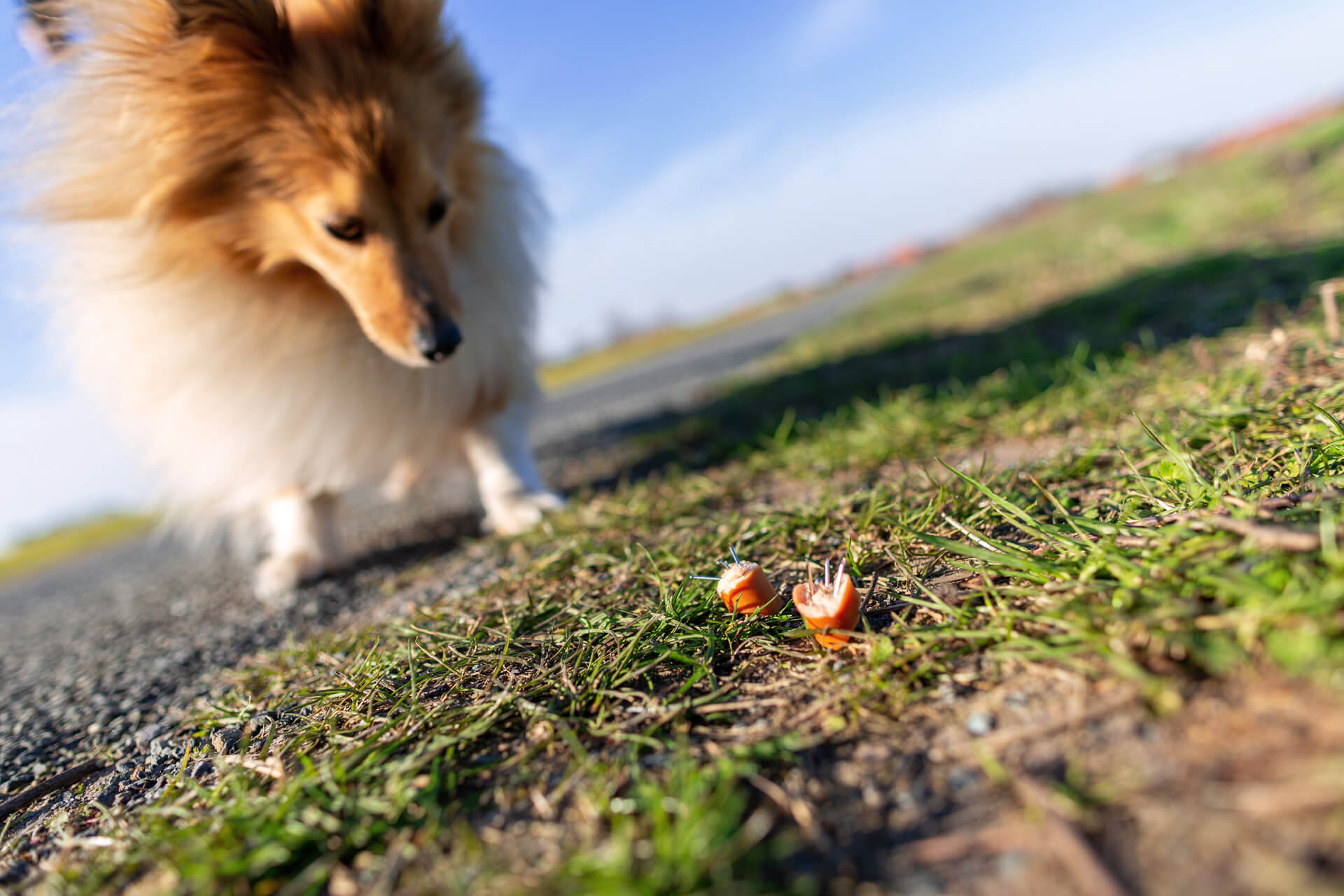
What are the most common dog poisoning symptoms?
If you suspect your buddy’s eaten, chewed, licked, or just come in contact with something potentially toxic, watch out for these signs:
- Vomiting (including blood in their vomit)
- Dehydration – which can look like drinking a lot of water
- Ulcers in their mouth – which might turn up as a lack of appetite
- Breathing problems
In more serious cases, poisoning can even lead to heart problems, liver and/or kidney failure.
What should I do if my dog is poisoned?
While it’s important you respond as quickly as possible, do your best not to panic. Rather, get in touch with your vet ASAP – even if your dog seems fine. Sometimes, even if poisoned, an animal may appear normal for several hours or even days.
Before bringing your dog to the vet, take the time to safely collect any material involved. This may be of great help to your vet to determine what poison or poisons are involved. It’s a good idea to collect any material your pet may have vomited or chewed in a plastic bag.
And last but not least, do not try to make your dog vomit unless instructed to do so by your vet.
Here are a couple of emergency numbers for animal poisoning control, depending on where you’re based:
| Country | Animal poisoning emergency hotline |
| US | 888-426-4435 |
| UK | 01202 509000 |
| Canada | 855-764-7661 |
| Australia | 1300 869 738 |
| New Zealand | 0800 869 738 |
How you can prevent your dog from getting poisoned
Dogs can be exposed to poisonous substances in a number of different ways, such as through skin contact, substances in the eye, or inhalation. However, the most common way for them to be poisoned is to eat, or chew, a poison.
So make sure to:
- Never let your dog into your kitchen area unsupervised
Even a morsel that’s fallen off the counter to the floor might end up in their mouths. - Keep your dog distracted while you’re cooking
Get one of your kids or housemates to play with them while you’re busy. (Or go for a YouTube video made for dogs to keep your buddy occupied.) - Set some firm boundaries with friends, family, neighbors, and other guests
Meaning, no feeding your dog outside of regular mealtimes – no matter how much they beg. You want to avoid someone feeding your buddy too much (resulting in them gaining weight over time) or something toxic, entirely by accident. - Follow regular mealtimes
This ensures your buddy is well-fed enough and doesn’t feel tempted to snarf down every morsel they can get their paws on otherwise. - Keep your dog’s feeding areas separate from the “human” foods area.
- Be extra careful when you’re both out on walks together
Take your eyes off them for a second and your buddy might’ve gobbled up something they shouldn’t have from the sidewalk.
Where a smart dog tracker can be a lifesaver
While we all hope to never face a pet poisoning emergency, having the right tools can make all the difference. A smart dog tracker like Tractive can act as a crucial safety net, providing features that help you monitor your dog’s well-being and stay informed about potential dangers in your area. Strapped to your dog’s collar, you can now:
Figure out where your dog is spending their time
One of the most valuable features of your Tractive device is your dog’s Location History. If you’re concerned about your dog’s whereabouts, you can use this feature to review their past movements and areas they’re spending more time in. This can help you pinpoint where they might have encountered something dangerous, such as poison bait.
Warn fellow pet parents about potential dangers
The Tractive tracker also has a community-driven feature called Danger Reports, where you can report and view nearby risks. This feature can alert you to dangers like poison, traps, or other hazards in a specific area, allowing you to take an alternate route or keep your dog on a tighter leash.

Prevent your dog from venturing somewhere dangerous
From your Tractive mobile app, you can also mark out “no go zones” in your neighborhood – and the wider area. This comes in handy if you’ve noticed any unsafe areas or places your dog might be encouraged to rifle through the trash. Now the second your dog tries to venture into one, you’ll get an escape alert to your phone.
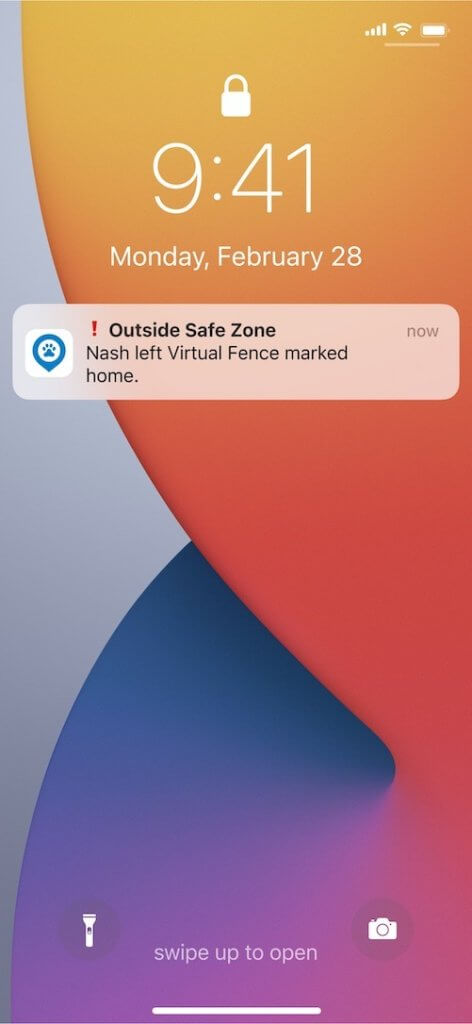
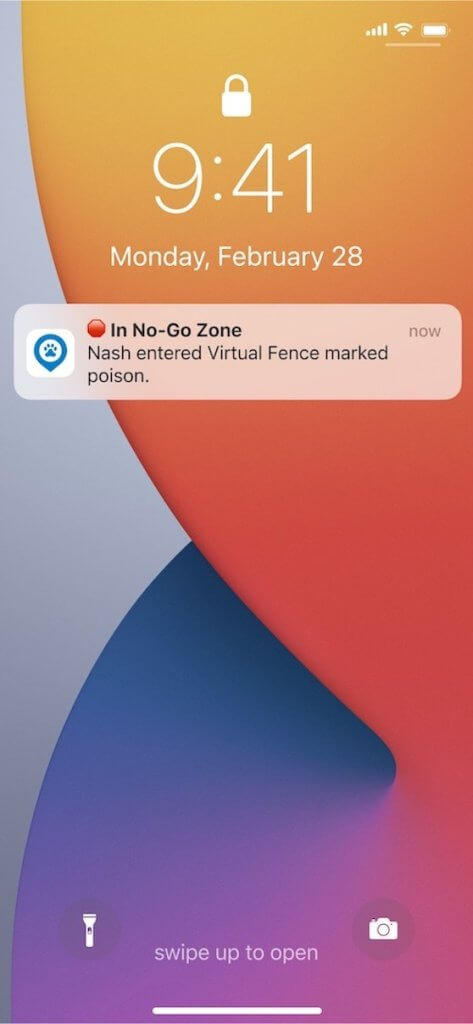
Spot potential health issues early
A dog’s behavior can change subtly when they’ve been poisoned. The Tractive smart tracker’s Health Monitoring features can provide an early warning system. By tracking your dog’s activity and sleep, the device learns their normal patterns. If it detects unusual behavior, such as a significant drop in activity or changes in sleep patterns, it sends you an alert.
The latest Tractive models also monitor vital signs like your dog’s heart and breathing rate. This can be particularly useful, as changes in these vital signs can signal stress, illness, or pain – all potential symptoms of poisoning. So you can seek veterinary care sooner rather than later, which is often critical in a poisoning situation.
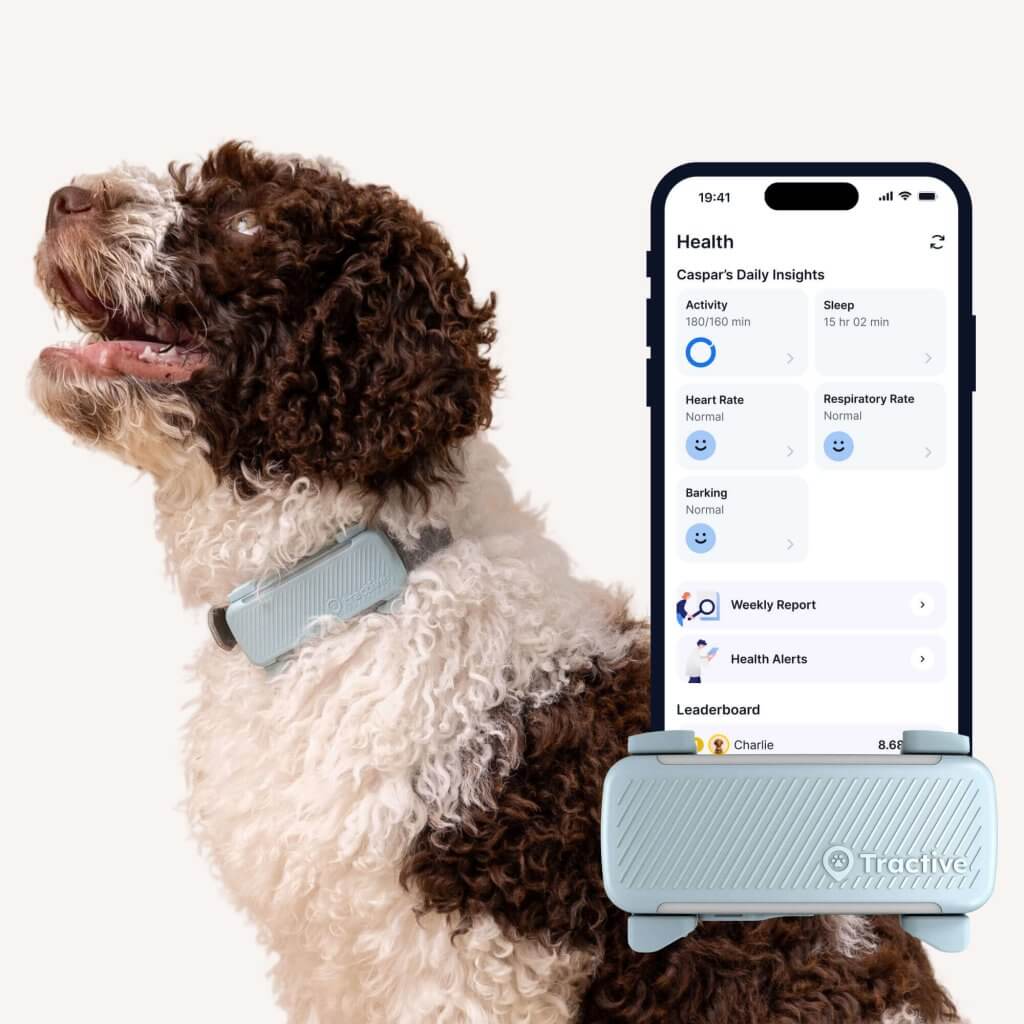
Get health alerts for your dog
Our pups can’t always tell us if something’s wrong. But if their tracker detects unusual changes in their routine, you’ll get an alert, helping you catch potential issues early.
And if you’ve liked this post, share it with a friend or a loved one – and let’s help build a safer, kinder world for our furry friends together.
